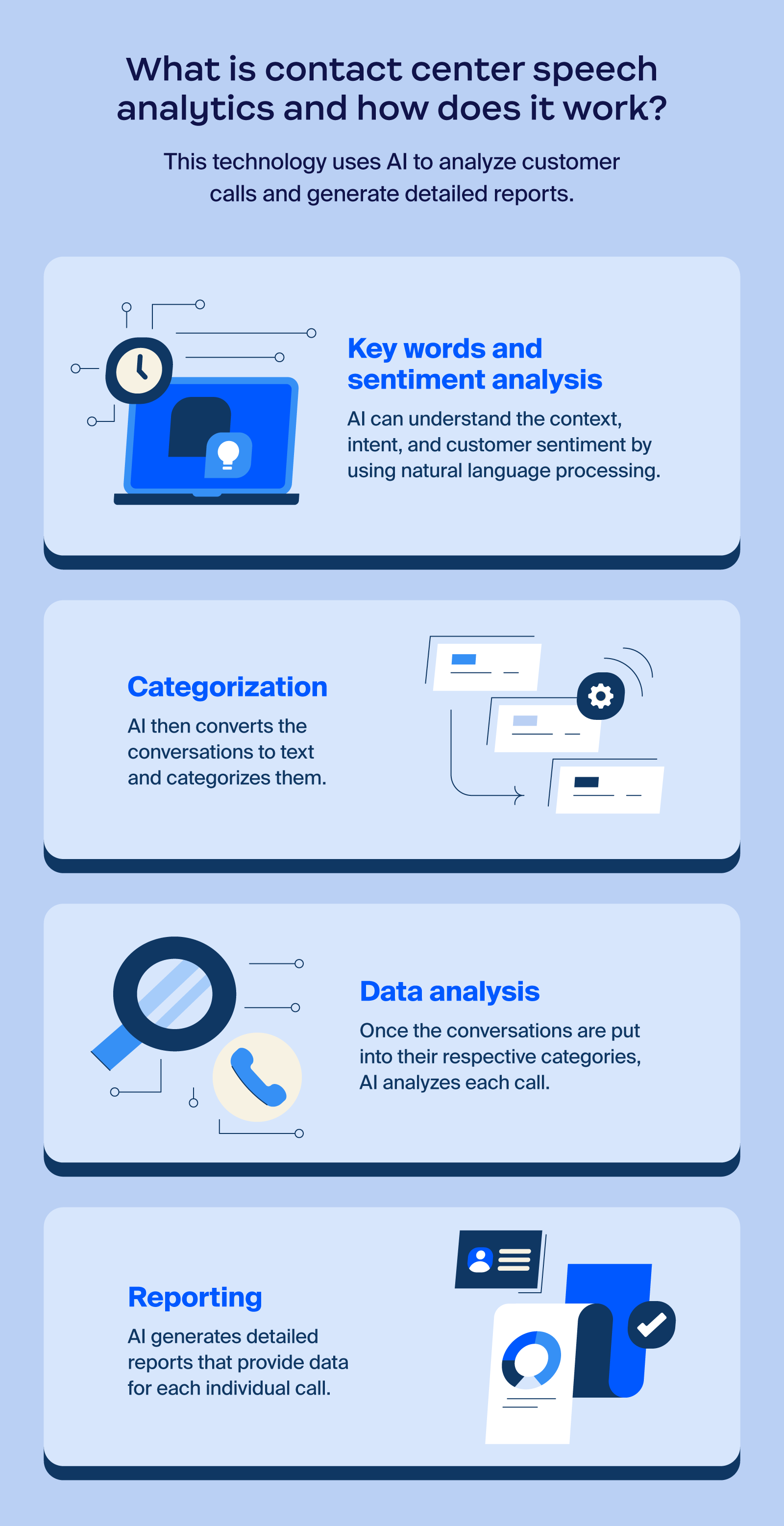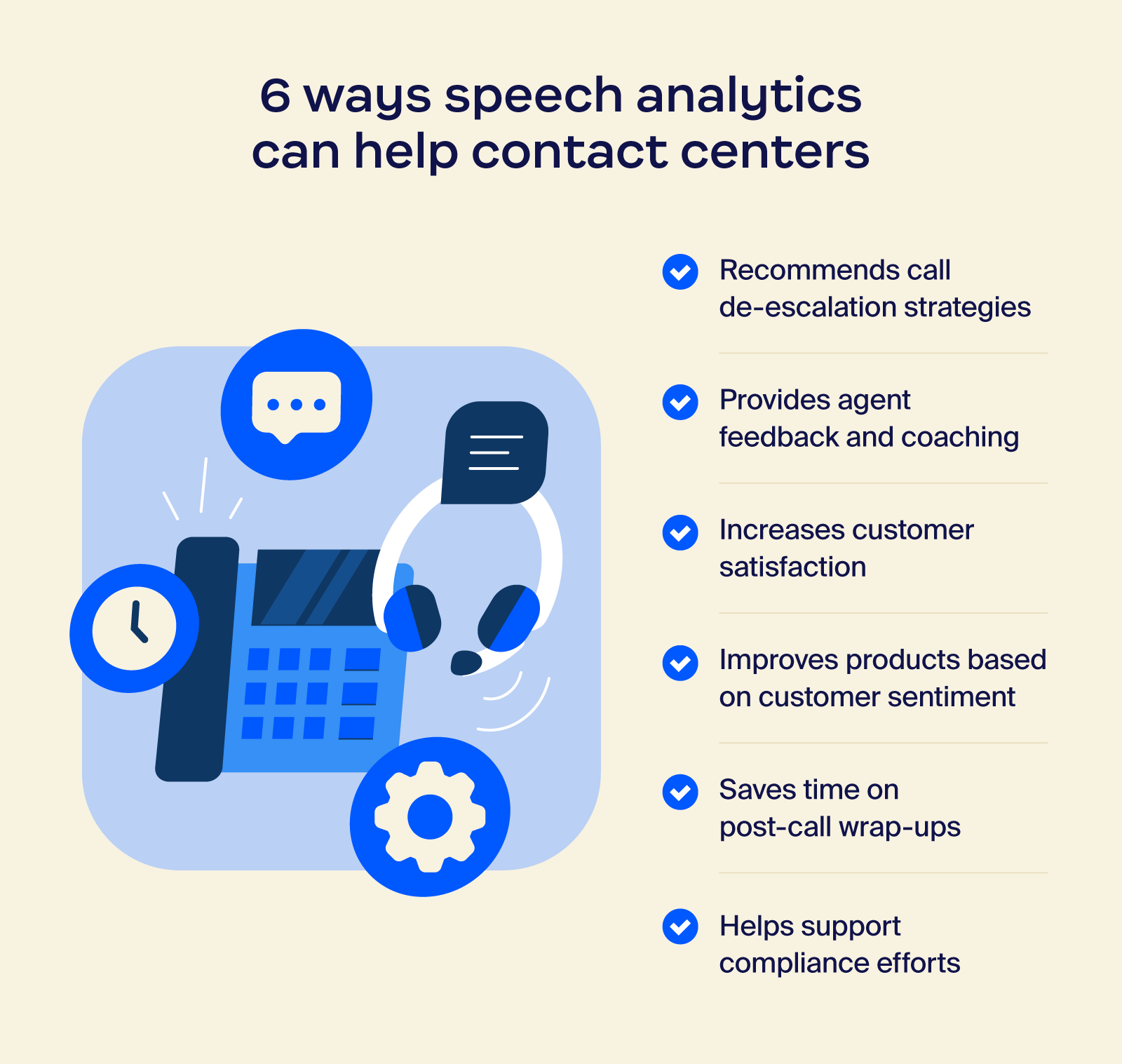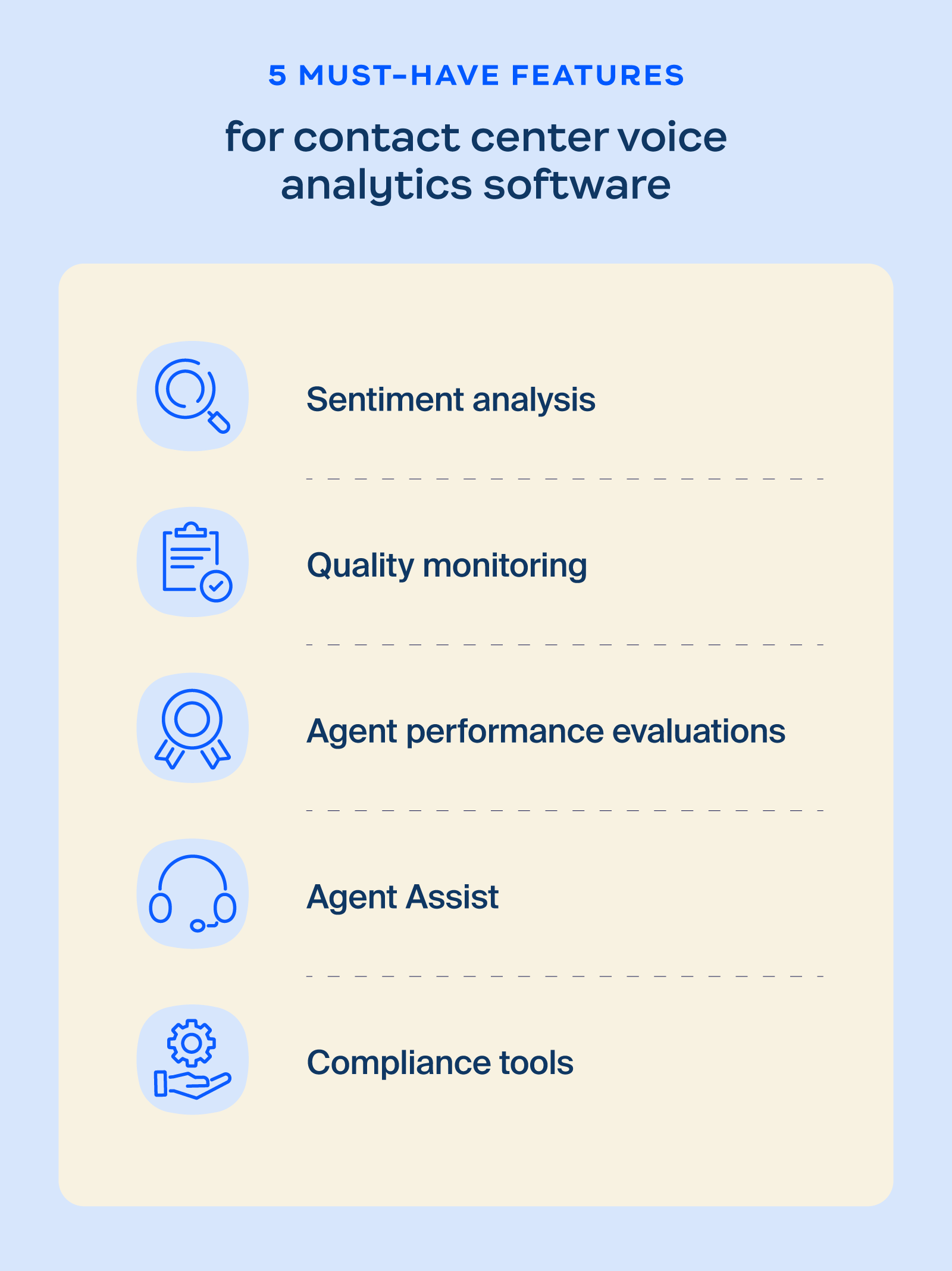
Meet Zoom AI Companion, your new AI assistant!
Boost productivity and team collaboration with Zoom AI Companion, available at no additional cost with eligible paid Zoom plans.
Updated on October 23, 2024
Published on October 23, 2024


Contact centers have traditionally relied on manual methods to analyze individual calls to gain insights into customer sentiment and agent performance. It’s a time-consuming process that can cause agents to miss valuable information from the interactions.
Call center voice analytics, powered by artificial intelligence (AI), provides contact centers with a more efficient and effective solution. By analyzing conversations, this technology extracts data to help improve customer satisfaction, enhance agent performance, and drive business growth.
Traditional contact center reporting misses or overlooks a lot of conversational data, often because a human has to review each individual call to find key information. With the latest in AI technology, you can easily gather additional data to gain an even better awareness of what’s happening during interactions. This can help your business improve and create a better customer experience.
In this post, you’ll learn the benefits of speech analytics and practical ways to integrate this new technology into your daily operations.
Voice analytics and speech analytics work together to understand human language. Voice analytics focuses on a person’s tone and sentiment, while speech analytics focuses on the words. AI contact centers use natural language processing (NLP) and natural language understanding (NLU) to comprehend human language and the context and intent of a conversation. It can then gather data and generate detailed reports.
Without this technology, you’re unable to see important information when looking at your current reports. If the customer doesn’t fill out a survey, how can you tell if they were satisfied with the call? If the call took longer than normal, are there reasons you may not see in your current reports?
With speech analytics, you’ll know how customers felt during the call and how agents handled the situation without the need to listen to individual recordings. Speech analytics analyzes customer sentiment, spotting different keywords and phrases the customer uses, putting the calls into different categories, generating reports, and even reviewing the agent’s performance during the call.
Each call is a learning opportunity, and the insights from contact center speech analytics allow you to find areas where you can coach agents to improve the customer experience.

Now that you know a little about how speech analytics works, let’s dive into some more specific benefits, as well as customer service and agent performance use cases.
When customers get in touch with a contact center, they’re typically hoping to resolve a specific issue, meaning they may not be in the best mood. It can take years of experience to effectively de-escalate calls, and even the most experienced agents still have a lot to learn. With contact center speech analytics, agents can receive de-escalation suggestions in real time.
The biggest benefit of real-time de-escalation suggestions is they decrease the need to place customers on hold. It also frees up supervisors by limiting the need to transfer the customer. Contact center AI can give quality recommendations by looking at previous calls to find what works, and it can also access your knowledge center to provide suggestions from your company’s protocols.
Contact center voice analytics software can pinpoint exactly where agents are facing challenges and then create feedback for coaching. Before voice analytics, quality managers needed to review individual calls, which was time-consuming. Voice analytics software helps save time by gathering data from each call and putting it in reports.
The data from voice analytics can show you where agents are struggling as well as their strengths. By monitoring different keywords and phrases, it can see if an agent may need more training on a frequently asked question or if they could use some coaching when handling specific situations. With all of the time quality managers save, they can focus more on coaching agents to be their best.
As your contact center continues to use voice analytics, you’ll soon find that customers are increasingly satisfied. They won’t need to wait on hold while agents find answers because AI can provide the agents with them instantly. You can also use AI for chatbots, allowing customers to resolve issues without contacting an agent, and they can also get help outside of normal business hours.
In addition to resolving customer issues faster, agents can regularly receive quality suggestions and feedback during interactions, leading to higher customer satisfaction. The contact center AI’s sentiment analysis helps agents reduce customer frustrations before they escalate, and a customer who doesn’t need to wait for a supervisor is a happy customer.
Your contact center has company and legal guidelines that agents must follow, and call center voice analytics can help monitor compliance. The contact center AI has access to your knowledge base, which can include all of your compliance guidelines. As it reviews each call, it can flag any tricky conversations if issues arise. Monitoring each call can save your compliance team a significant amount of time by checking for internal and regulatory requirements.
A common challenge contact centers face is getting customers to provide feedback about products after their conversations. Fortunately, call center speech analytics can gather data when customers contact you about specific products. It generates reports that can give you valuable insights, which can help you improve your products.
If customers are regularly calling your contact center for a specific issue with your products, you’ll know about it sooner rather than later. This allows you to find solutions quicker instead of learning about the ongoing issues weeks or months later. These insights can also help you predict customer behavior, leading to better risk mitigation and less churn for future products.
Agents can save quite a bit of time with voice analytics because it helps create post-call wrap-ups. AI can summarize what happened during the interaction, like how it went and how the customer appeared to feel when they called and when it ended. After the call, the agent simply needs to review the summary and add any necessary details. The time saved allows agents to help the next customer even sooner, which can increase their productivity.

As mentioned earlier, contact center voice analytics utilizes NLP and NLU, but these are only two aspects of how it works. These are key parts of the technology, but voice analytics also often involves large language models (LLMs), machine learning (ML), and speech recognition and synthesis. All of these parts work together to provide your call center with a myriad of data.
AI voice analytics trains on LLMs — massive neural networks that review vast amounts of text so it can properly communicate. Through machine learning, the AI model gets better with each interaction as more data comes through, improving the system over time.
AI can also communicate with customers using a human-sounding voice through speech recognition and synthesis. As the contact center’s AI monitors more calls, it can generate realistic voices to communicate with and help customers.
Before purchasing contact center AI software with voice analytics, you should know what features to look for. Having the right features can provide agents, customers, and management with a better experience. Here’s what to look for:

Through the power of AI-powered speech analytics, Zoom Contact Center empowers businesses to reveal hidden insights from each customer interaction. With real-time agent assistance, sentiment analysis, and actionable data-driven reporting, your contact center can optimize agent performance and elevate customer satisfaction.
If you’re ready to revolutionize your contact center and drive your business's growth, Zoom Contact Center has all of the features you need. Request a demo today to learn more.